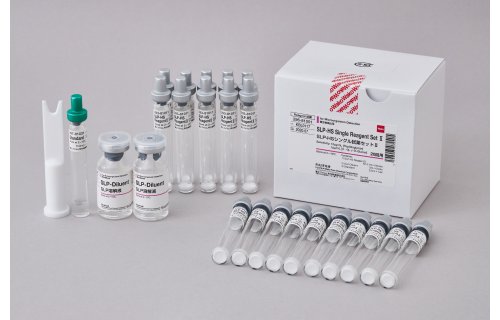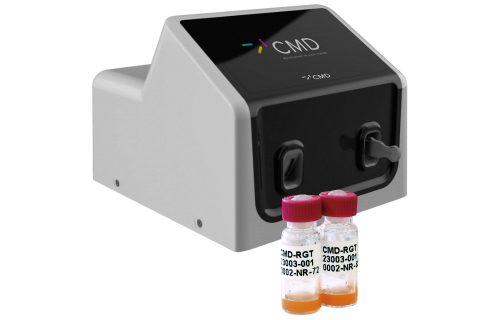MAT – Future of Pyrogen Testing?
Pyrogens that enter the human body by parenteral administration (injected into the human body) are recognized by the human monocytes’ TLR and at sufficient concentrations activate signalling pathways that launch immune and inflammatory responses and release endogenous pyrogens. This can lead to severe adverse reactions including fever, inflammatory reactions, multiple organ failure and, sometimes, even death[1]. Pyrogen contamination can happen from different sources like water, drugs, medical equipment, and steam. Detecting pyrogens in these substances is crucial before using them.
The detection of pyrogens in parenteral products can now be done using three officially recognized tests. These tests include the Rabbit Pyrogen Test (RPT), the Limulus Amoebocyte Lysate test (LAL), and the Monocyte Activation Test (MAT).[2]
Disadvantage of RPT and LAL Techniques
Due to the substantial ethical concerns that arise from the extensive utilization of animals in pharmaceutical testing (RPT), the majority of pharmacopoeial monographs have replaced the test with LAL. Many view the utilization of animal blood as a reagent in LAL as a drawback comparable to that of RPT.
The MAT (Monocyte Activation Test) Technique
The main purpose of the MAT is to detect and measure the levels of both endotoxin and non-endotoxin pyrogenic contaminants. These contaminants can activate human monocytes, leading to the release of endogenous mediators[1]. In order to conduct the MAT, human monocytic cells are exposed to pyrogens in vitro, leading to the activation of these cells. This activation triggers the release of proinflammatory cytokines, which are subsequently quantified using the ELISA technique[2].
The MAT utilizes human cells, making it more physiologically relevant. Moreover, this detection system can identify and measure both endotoxin and non-endotoxin pyrogens with quantitative precision.[3]
Future Prospects of MAT
In the past, the Rabbit Pyrogen Test (RPT) was widely regarded as the benchmark for pyrogenicity testing. As scientific advancements continue to evolve, the introduction of more sophisticated and ethical methods, including the in vitro monocyte-activation test (MAT), has become increasingly prevalent.
Despite the difficulties, the process of shifting from the RPT to the MAT has proven to be quite demanding. An international conference titled "The future of pyrogenicity testing: phasing out the rabbit pyrogen test" was jointly hosted by the European Directorate for the Quality of Medicines & HealthCare, the Council of Europe, and the European Partnership for Alternative Approaches to Animal Testing. The conference focused on demonstrating the European Pharmacopoeia's plan to eliminate the RPT from its texts by the year 2026, streamline the adoption of MAT, and identify any deficiencies in the eradication of RPT.[4]
In accordance with the FDA guidelines for industry on Pyrogen and Endotoxin testing, it is necessary to conduct product-specific validation to determine if a specific test substance or material is suitable for evaluation using the MAT technique. The validation process should include different tests, like interference testing and accurate pyrogen detection in each sample, while also ensuring the device had direct contact with monocytes.[5]
Breakthrough in Pyrogen Detection
The results of the MAT can be regarded as more accurate due to its in-vitro mechanism, which prevents any influence from physiological conditions such as stress and anxiety in animals. The MAT is recognized as a quantitative, sensitive, and reliable in vitro test that has the ability to detect both endotoxin and material-induced pyrogenic response.[6]
In addition to the necessary efforts required for implementing MAT in the pharmaceutical industry while ensuring the utmost patient safety, the transition from RPT to MAT creates opportunities for sustainable pyrogen detection solutions that are free from animal testing.
- Solati, S., T. Zhang, and S. Timman, The monocyte activation test detects potentiated cytokine release resulting from the synergistic effect of endotoxin and non-endotoxin pyrogens. Innate Immun, 2022. 28(3-4): p. 130-137.
- Perdomo-Morales, R., et al., Monocyte activation test (MAT) reliably detects pyrogens in parenteral formulations of human serum albumin. Altex, 2011. 28(3): p. 227-35.
- Carson, D., et al., Development of a Monocyte Activation Test as an Alternative to the Rabbit Pyrogen Test for Mono- and Multi-Component Shigella GMMA-Based Vaccines. 2021. 9(7): p. 1375.
- Cirefice, G., et al., The future of pyrogenicity testing: Phasing out the rabbit pyrogen test. A meeting report. Biologicals, 2023. 84: p. 101702.
- Sandle, T., FDA guidance on pyrogens and endotoxin testing.
- Brown, J., et al., Using the monocyte activation test as a stand-alone release test for medical devices. 2021. 38(1): p. 151-156.






